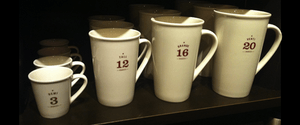What Can Your Business 'Unhide' with Data Science?
July 31, 2014
This post is a part of a series from the partners at Datascope, titled Business Strategy in Focus: Bring Me My Monocle
Born in a two-room office over a Honesdale, Pennsylvania car dealership in 1946, Highlights magazine has published more than one billion copies of their magazine containing “Hidden Pictures.” Remember those sailboats, bananas, and umbrellas, all cleverly hidden in plain sight?
Businesses have “hidden pictures” of their own, with all kinds of opportunities concealed in the complexity of daily operations, but who has time to find them? When at the helm of a business, it can be easy to get so engrossed in these complexities that it’s difficult to step back and observe them from original perspectives.
Finding hidden pictures is familiar territory for data scientists. With creativity, ingenuity, and perspective, data scientists help businesses uncover what’s hiding in plain sight by analyzing, visualizing, and simplifying the most complex of organizational conundrums.
Too Much to Take In
A research study by The Economist Intelligence Unit took a close look at how CFOs make decisions. It found that 63% of CFOs say their job entails analyzing all available information, yet 47% say that their decision making is slowed down by information overload. When overwhelmed with information, it is difficult to distinguish the signal from the noise. Data scientists help you step back from the data you have collected to identify the problems you can and should be solving.
A Long Tradition of Tunnel Vision
Many businesses are structured to operate in silos and report in a reactive mode. This leads to competitive tunnel vision, making it extremely difficult to discover systemic issues and truly enterprise-level opportunities. When data and analytical teams are confined to marketing, IT, or human resources, businesses can fall into the trap of only using these resources to answer surface-level questions.
Limiting data and quantitative expertise to specific departments obscures opportunities where data can be created, combined, or leveraged in a different way. The most innovative outcomes often result when these interactions happen. Data scientists have the position within a company and the mindset to deliver these outcomes.
What is data science?
Data science is the practice of approaching data (both from inside and outside a company) from a curious and creative perspective, with the end goal of solving concrete business problems. Frequently, it involves collaborating closely with a variety of business roles, combining data across multiple diverse sources and prototyping cutting-edge custom visualizations and tools.
In Search of a Nail
Today there is no shortage of data-related tools and solutions, all promising the ability to drive decisions with real, quantitative facts. Why are data scientists necessary when out-of-the-box analysis toolkits are now so pervasive and easy to use?
This situation calls to mind prominent psychologist Abraham Maslow’s Law of the Instrument: “it is tempting, if the only tool you have is a hammer, to treat everything as if it were a nail.” While some of these tools can be useful, completely relying on them narrows the scope of questions that can be asked.
When there are limits on the questions one can ask, the most eye-opening answers may prove to be elusive. Data science teams are aware of the broad set of possibilities that the age of Big Data has introduced. They use data as a resource to help formulate (and answer!) more intelligent and useful questions.
A New Perspective
Data science can function as a novel approach to solving complex business problems, or a way to reveal new opportunities for a business, be they innovative new products, services, or processes. It is not an off-the-shelf tool or preconfigured solution to analyze data, but a leadership resource that provides you with a keen understanding of your business. A good data scientist can uniquely frame solutions and experiments by approaching and interpreting data in completely novel ways.
Case in Point: Procter & Gamble
Procter & Gamble found themselves facing the complex problem of rolling out a new business process across a 3,000 person global team. Naturally, P&G couldn’t individually train every member of this team; they had to pick a small subgroup. No tools existed to approach this problem in a quantitative way. How could they be sure they were picking the right people?
Datascope framed the problem differently: instead of simply selecting a sample of employees to train, what if we could model the spread of information from person to person through the team? By building and analyzing a social network of employees, we could intelligently choose a group of employees that would spread this new process to every corner of the global team. A problem previously solved by managers’ gut instincts could now be solved in a reproducible and optimal way.
By creatively approaching P&G’s problem without constraining ourselves within existing tools or departments, we delivered an effective quantitative solution to their business problem that they previously didn’t think possible.
Ready to Find the Hidden Pictures in Your Organization?
Start looking for the hidden gems in those special requests hitting your desk, but don’t expect them all to come from IT. Leads on new areas for research and bottom line improvements can originate from unexpected sources across your organization. You might not immediately see the potential, but a data scientist’s perspective can spark the inspiration for the next breakthrough idea that leads to true business innovation.









